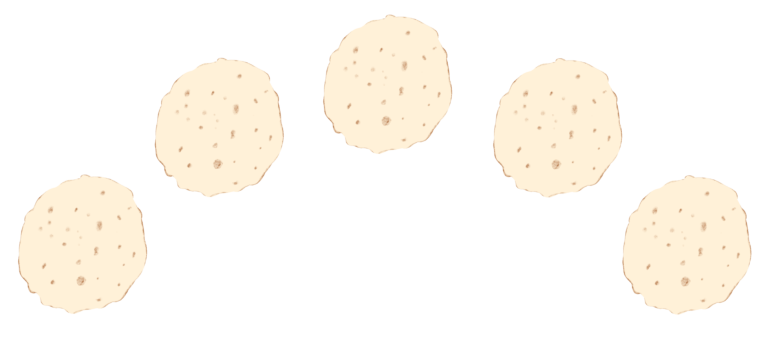Packaged tortillas are ubiquitous in American society; only white bread is more popular, as bread products go. Occasionally, you can find them made in house at a Mexican restaurant, and it’s not uncommon to see local factory made tortillas nowadays. Most non Latin Americans, however, have never experienced a fresh corn tortilla. If you’re lucky enough to have had the pleasure, you know how delicious this treat is. The first step for most people who want to try and make their own tortillas but don’t have a tia who can show them the way, would most likely turn to Google, end up at Winco, buy a bag of Maseca and follow the instructions on the bag.
Without someone experienced to show you the way, these might not come out well. The directions on the bag are simple but imprecise. “If dough feels dry,” as compared to what?! What is a tortilla press and where do people buy “thick plastic wrap?” Weird problems may arise like air bubbles that trap steam and leave undercooked and wet spots. The dough can stick everywhere – to the plastic, or to the pan. They come out dry, burnt or mushy. Of course, this is a humbling result, and maybe it forces us to consider the complexities represented by ‘tortilla,’ to learn a little bit of her history.
Centuries of trial and error over two continents result in a nutritious, delicious, versatile bread that can be prepared with two ingredients: field corn and an alkalinity. Corn’s predecessor is teosinte (Zea perennis). It’s a little grasslike plant with a grain cluster about 1 inch long that grows in tiny hard casings. It is theorized that prehistoric Mesoamericans chewed on its grassy stalk while they walked and inadvertently spread its seed in their travels. Then, beginning 9000 years ago, women on seasonal
migrations experimented with collecting and planting certain seeds while men hunted, revisiting locations annually and continuing to select for desirable traits. Humans throughout the planet use this boosted land race technique to increase palatability and nutritional availability. This has yielded all sorts of plants, but corn is unique in its remarkable transformation from a nearly inedible grass stalk into a starchy, sweet global staple.
Archeologists speculate that when ancient Amerindians heated chunks of locally abundant limestone in their fires and dropped them into pots of water and corn to cook it, the water alkalized in addition to boiling. This dissolved the hemicellulose in maize cell walls and made their food more nourishing. This process, called nixtamalization, can also be produced by adding hardwood ash to cooking water, as was the custom in North America. Powdered calcium hydroxide, called “slaked lime” in English or “cal” in Spanish, is the widely available product we use to nixtamalize corn today.
Masa harina is used by most home tortilla makers. These words literally translate to “dough flour” in Spanish. It’s made by drying ground corn that’s been pre-cooked with lime. There are lots of options online. Maseca is a popular brand that’s easy to find at a grocery store. Bob’s Red Mill’s Masa Harina is a little more expensive and not as commonly stocked, but it’s fresh, local and arguably more delicious. Any masa harina will yield a stack of tasty tortillas in under an hour: just add hot water, allow the dough to hydrate for about 30 min, and cook on an ungreased, hot griddle. Alternatively, Three Sisters Nixtamal (co-owned by PSU’s very own faculty Pedro Ferbel-Azcárate) sells fresh ground nixtamalized corn dough and tortillas, no mixing or waiting required. Whether you mix it up from a bag of masa harina or buy it fresh from Three Sisters, a few pounds of masa in your fridge will keep you supplied with mouthwatering tortillas all week. Too busy to cook? Tortillería y Tienda de Leon’s on the Eastside and Sanchez Taquería y Panadería in Tigard are a couple of many establishments in the Portland area offering house made tortillas. With all these options to satisfy your fresh tortilla cravings, there is no need to go any further down the tortilla rabbit hole, but some of us just can’t resist. If that’s you, and
you‘re looking to buy dry field corn, a grain mill, and a bag of cal, heads up, you might be about to appraise your claims to Amerindian food science.
Your journey began on Google rather than in Grandma’s kitchen, accessing lots of free content created by people of Indigenous heritage, or based on their knowledge. The same European cultural standards and processes of colonization that influence relationships in the United States are ubiquitous throughout the Americas. Whether our touchstones are Hernán Cortez or Andrew Jackson, a pale complexion situates White people on the advantageous side of various American genocidal legacies. This fact raises unique questions for each of us, but our intimate, philosophical, and historical relationships to culture on this piece of the planet are necessarily at play when we put our hands on ancient indigenous corn cakes.
The process of learning how to make tortillas will help you answer these questions. Because if you didn’t interact with the dirt that grew the corn, didn’t offer any prayers at planting, didn’t ask for permission to pick the ears of this ancient and societally foundational crop, would toss a burnt tortilla into the trash can without a second thought, well, you can benefit from searching, trying, failing, and reaching out for advice. These are the skills many of us have lost in our socially isolated lives. We’re taught to prioritize self reliance and we can be as selfish with our resources as we are greedy for direct answers.
As you tackle ‘tortillas,’ situate yourself in location. Find out for yourself which identities of class, gender, ethnicity, and location intertwine with personal memories and universal sensory experiences like digging in gardens, tasting salt, smelling dough become bread, or listening to see if water is boiling. Notice whose expertise you’re drawn to. If you seek knowledge that never got passed to, contemplating the reasons why it wasn’t. Follow instructions and your own intuition to try something you don’t know
how to do. Notice the way this type of engagement feels in your body. And then feed that body lots and lots of tortillas.
illustration by Mckinsey Carroll





